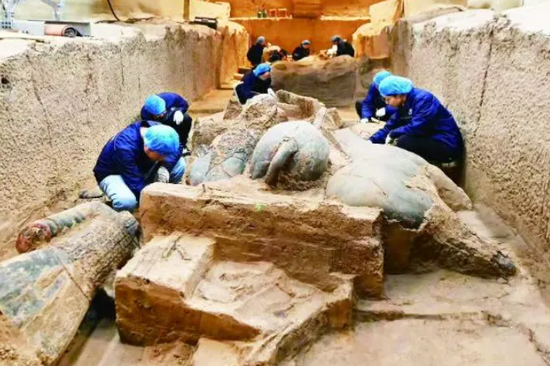Ancient chariots unearthed at terracotta warriors site
In Xi'an, Shaanxi province, archeologists recently unearthed remains of two chariots from the No 2 pit at the mausoleum belonging to Qinshihuang, China's first emperor who unified the country in 221 BC.
Three terracotta warriors and three terracotta horses have been uncovered from the remains, according to the Emperor Qinshihuang's Mausoleum Site Museum.
Zhu Sihong, head of the No 2 pit archaeological project, said that a typical chariot during the Qin Dynasty (221-206 BC) was equipped with four horses and manned by three soldiers. The central soldier was known as the "charioteer", and those on either side were called "left chariot soldier" and "right chariot soldier".
Among the three warriors unearthed from the pit, two have been identified as the "right chariot soldier" and "charioteer", while the third is preliminarily believed to be the "left chariot soldier", Zhu said.
"The new discovery enriches our understanding of ancient military technology and highlights the crucial role of chariot soldiers in combat," Zhu said.
The first phase of archaeological excavation of the No 2 pit commenced in 1994, and the second phase began in 2015. Military formations of cavalry, crossbowmen, chariots and mixed units have been found.
Discovered in 1974, the terracotta army at Emperor Qinshihuang's mausoleum is a collection of thousands of life-size terracotta soldiers, horses and chariots in battle formation. More than 2,000 terracotta warriors and horses, as well as chariots and bronze weapons, have been excavated from the mausoleum's three pits.
In 1987, the Mausoleum of the First Qin Emperor was designated a UNESCO World Heritage Site.

